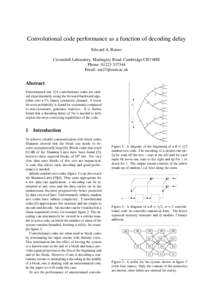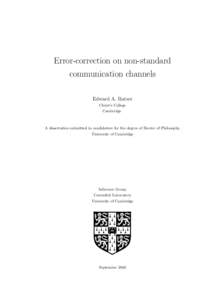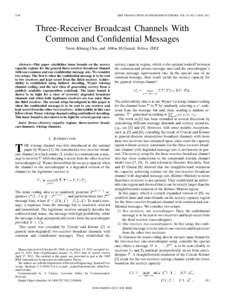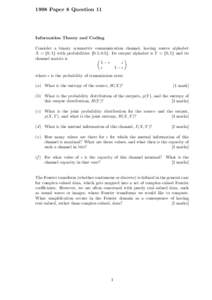<--- Back to Details
| First Page | Document Content | |
|---|---|---|
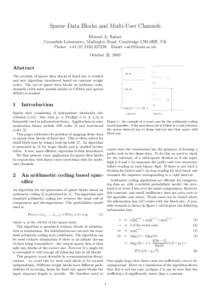 Date: 2003-03-05 13:32:57Coding theory Error detection and correction Information theory Discrete mathematics Mathematics Low-density parity-check code Forward error correction Binary symmetric channel Noisy-channel coding theorem Linear code Prefix code Huffman coding |
Add to Reading List |
 Sparse Data Blocks and Multi-User Channels Edward A. Ratzer Cavendish Laboratory, Madingley Road, Cambridge CB3 0HE, UK Phone: +Email: October 25, 2002
Sparse Data Blocks and Multi-User Channels Edward A. Ratzer Cavendish Laboratory, Madingley Road, Cambridge CB3 0HE, UK Phone: +Email: October 25, 2002